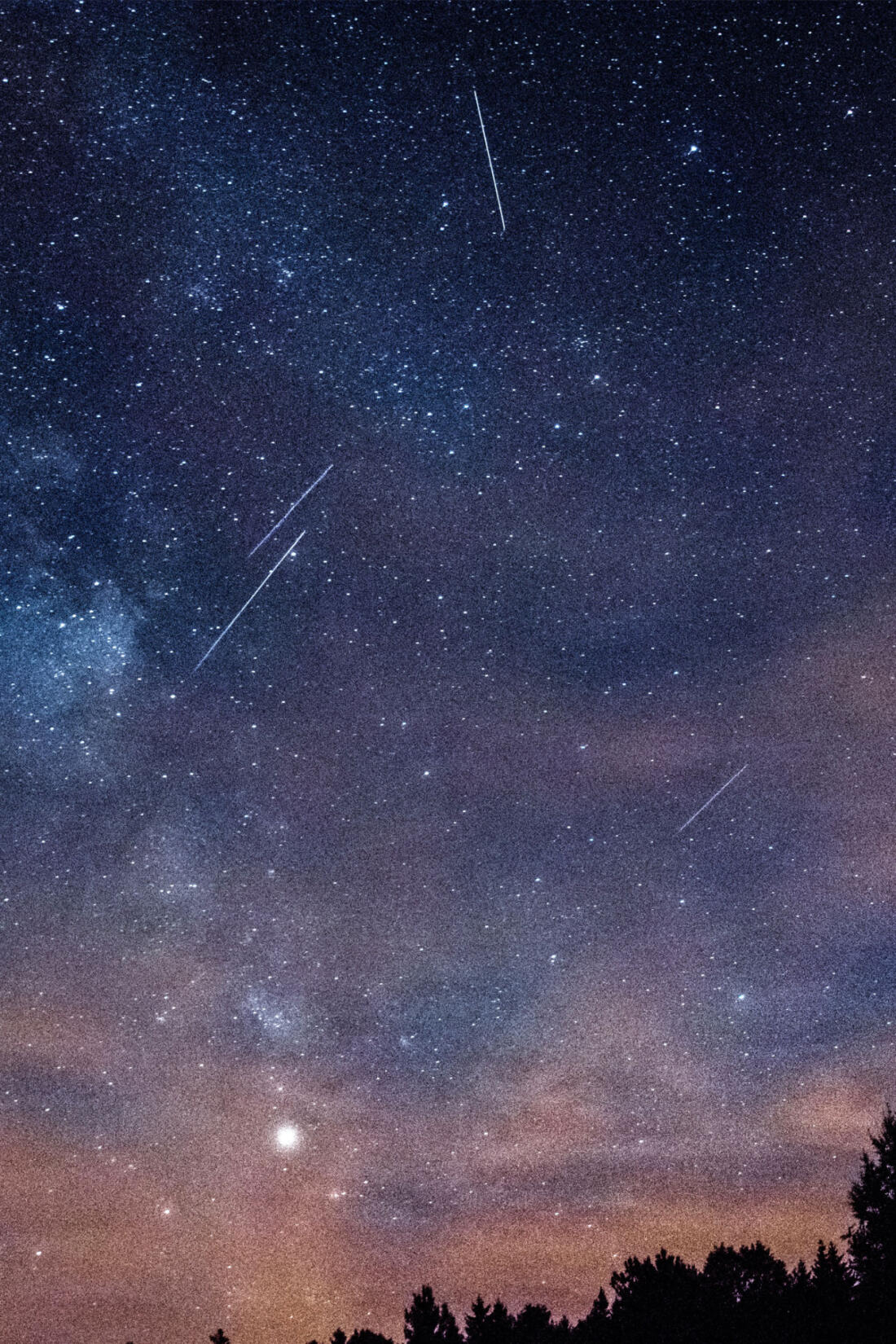Look up!
The long nights ahead are perfect for star and planet gazing, and you don’t (always) have to stay up so late. What might you see staring up into the darkness in the next month or two?
Meteor shower calendar
Visible: 28 December 2022 to 12 January 2023
Peak: 4 January
Rate/hour: 110
Visible: 14-30 April
Peak: 22-23 April
Rate/hour: 18
Visible: 19 April - 28 May
Peak: 6 May
Rate/hour: 50
Visible: 3 July - 15 August
Peak: 30 July
Rate/hour: 5
Visible: 12 July - 23 August
Peak: 30 July
Rate/hour: 25
Visible: 17 July - 24 August
Peak: 12-13 August
Rate/hour: 100
Visible: 2 October - 7 November
Peak: 21-22 October
Rate/hour: 25
Visible: 6-10 October
Peak: 8-9 October
Rate/hour: 10
Visible: 20 October - 10 December
Peak: 12-13 November
Rate/hour: 5
Visible: 6-30 November
Peak: 17-18 November
Rate/hour: 10
Visible: 4-20 December
Peak: 14-15 December
Rate/hour: 150
Visible: 17-26 December
Peak: 22-23 December
Rate/hour: 10

Venus
What? A steady silvery light.
When? Three hours before dawn in October and November.
Where? Found in the eastern sky, near to the horizon.
Orionid meteor shower
What? Fast-moving, fine trains of light, made up of pieces of the famous Comet 1P/Halley. While Comet Halley only passes earth every 75-76 years, the tiny debris falling from the comet as it orbits the sun enters our earth’s atmosphere each year.
When? 2 October - 7 November, with the meteor peak on the night of 21 – 22 October, from midnight until dawn.
Where? The meteors’ path seems to originate from a point in the Orion constellation, in the west-southwest direction in the UK night skies.
Mercury
What? Bright “star” with yellowish-orange hue.
When? In the morning 2 hours before the sun rises between Nov 3 and Nov 22.
Where? Look to the horizon. You might also see Venus shining brightly nearby.
Mars
What? Shining at a magnitude of 2.7, Mars is three times brighter than Sirius (the brightest star in the night sky).
When? Throughout October and November
Where? Mars rises over the eastern horizon, early to mid-evening. Visible shining closely to the moon at dawn.
Jupiter
What? Non-twinkling, silvery star.
When? Visible in the evenings until mid-December.
Where? Against the star background of Sagittarius, the Archer.
Orion the hunter
What? A short, straight line of three medium-bright stars.
When? From early November, Orion the Hunter will become easy to spot during the mid-evening.
Where? Rising in the east.
Geminid meteor shower
What? The meteors of Geminid burn in several colours due to the trace metals found in the rocks entering the atmosphere. If you’re lucky, you could see up to 100 meteors per hour.
When? From 4 to 20 December 2023, peaking on 14-15 December.
Where? Locate the bright star Castor in the constellation Gemini, for the point at which the meteor shower begins. To find Gemini, first find Orion (see above), then turn your head slightly northeast.
Ursids
Visible: 17-26 December
Peak: 22-23 December
Rate/hour: 10
Further reading
Discover more
Be the first to know
We'd love to keep in touch and send you the latest news, events, competitions and offers from the Bay. Sign up to receive our e-newsletter.